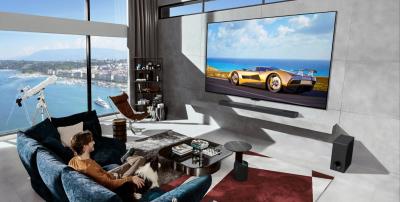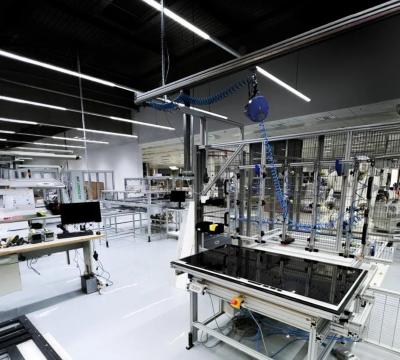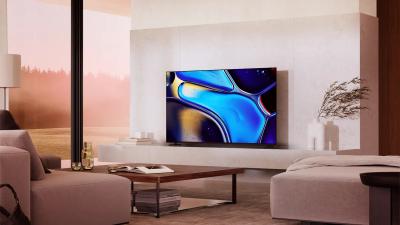What is an OLED TV?
OLED TVs use a display panel technology called OLED (Organic Light Emitting Diodes). Compared to LCDs, OLEDs offer an improved image quality, and are brighter, more efficient, and thinner. Simply put, OLED TVs deliver the best picture quality ever!
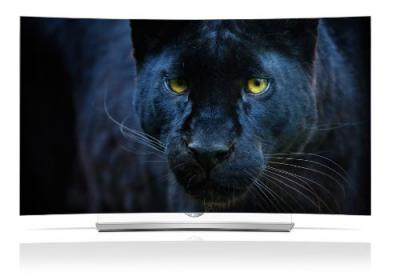
OLED TV technology
Each pixel in an OLED TV emits light on its own (in fact each pixel is made from 3 different OLEDs, red, green and blue). OLEDs are truly emissive devices with a simple design which gives them many advantages over current LCD technology:
- High contrast: in OLEDs we have true blacks as when a pixel is off it does not emit any light. In LCDs, the backlighting is always on and so true blacks are impossible to achieve. Even when compared to the latest high-end mini-LED backlit LCDs, the contrast of OLEDs is superior.
- High refresh rates: OLEDs can switch on and off much faster than LCDs.
- Better power consumption: OLEDs only consume light on lit pixels - as opposed to LCDs who always need to use the backlighting. The power consumption of OLEDs depends on the image shown, but in most cases OLEDs will be more efficient than LCDs.
- Flexibility: the simple design of OLEDs enables next-generation flexible, bendable, foldable and even rollable displays.
Click here for a more in-depth comparison between LCDs and OLEDs.
OLED TVs on the market - what can you buy today?
The leading OLED TV panel producer is LG Display - making panels ranging from 42-inch to 97-inch. These OLEDs offer the best image quality of all TVs on the market today. LGD is offering its OLED panels to many companies, including LG Electronics, Sony, Vizio and Panasonic.
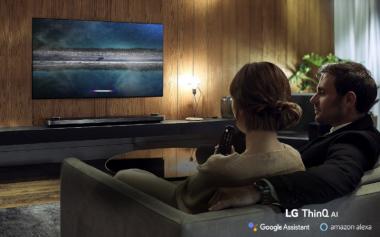
In 2022 Samsung joined LGD and started to produce its own OLED TV variant, called QD-OLED (which is based on blue OLED emitters and quantum dots color conversion technology). QD-OLED panels offers a superb image quality, but Samsung's production capacity is smaller than LG's.
Today close to 10 million OLED TVs ship every year, from many TV producers (including LG, Samsung, Sony, Panasonic, Philips and more), offering a wide range of OLED TV models. Click here for the latest OLED TVs on the market.
Reviews of OLED TVs are terrific, and most experts and consumers agree that these OLED TVs are the best TVs ever produced - with virtually perfect image quality and beautiful form factors.
Direct Emission vs WRGB / QD-OLED
The most straightforward OLED architecture uses 3 color OLED sub-pixels (Red, Green and Blue) to create each 'pixel'. This is referred to as a direct emission OLED, and is the design used in mobile OLED displays (for example those used in Apple's latest iPhones, iPads and Watches). But direct-emission OLEDs are not available in TV sizes (not yet, anyway).
For its OLED TVs, however, LG Display uses a different architecture, called WRGB (or WOLED-CF) which uses four white OLED subpixels (each created by using both blue and yellow OLED emitters) with color filters on top (RBG and W). The WRGB technology (developed by Kodak many years ago and now owned by LG Display) was found to be easier to scale-up for large-area OLED production, although it suffers from lower efficiency and more complicated design compared to direct-emission TVs .
As we stated, Samsung's OLED TV architecture is based on blue OLED emitters and quantum-dots color conversion layers. In terms of performance, this architecture seems to be rather similar to LGD's WRGB panels.
Further reading
- Introduction to OLEDs
- A list of all OLED TVs on the market
- OLED vs LED TVs
- Flexible OLEDs
- The OLED Toolbox, OLED industry guides, insights, data and more!
Study reveals OLED TVs promote healthier sleep patterns compared to LCD screens
Seoul's Kookmin University researchers concluded a clinical study to verify the impact of TV panels of sleep, measuring the levels of the sleep-inducing hormone melatonin in 40 adult men and women divided into groups watching the same content on either LCD or LG's WOLED TVs.
The researcher found that melatonin secretion fell 2.7% over two hours for the LCD group and it increased 8.1% in the OLED TV group. Melatonin rises in the evening to prepare the body for sleep, but the blue light emitted from displays disturbs the melatonin secretion as it confuses the body. As LCDs emit about twice as much blue light as OLEDs, it is not a surprise they have this effect on melatonin levels.
Omdia: shipments of OLEDs over 9-inch in size will soar 124% in 2024
According to Omdia, sales of OLED panels in sizes over 9-inch (the company refers to these as Large Area Displays) will increase 124.6% in 2024. In 2023, the market contracted 25.7%, with the only exception being OLED monitor panels that grew in shipments.
In 2024, Omdia says that all application areas will see an increase in shipments - TVs, monitors, tablets and laptops. Only the company's "other" category will see a decrease in sales. In particular, tablet OLED shipments are projected to increase by 294% compared to 2023, largely due to Apple's adoption of OLEDs in the 2024 iPad Pro tablets. Laptop OLED sales will increase 152.6%, and monitors OLEDs will increase 139.9%. Finally, OLED TV panel shipments will increase 34.8%.
DSCC: demand for AMOLEDs to increase, but the market will remain in oversupply
DSCC says that the AMOLED industry (mainly smartphones and IT applications) is still in oversupply, and this will remain so until 2028 - but demand is expected to increase faster than capacity and so the oversupply will gradually decline to 2028.
Regarding OLED TVs, demand will increase and fab utilization will improve - but in this market DSCC also sees an oversupply situation to 2028 at least (a surplus of 22% in 2028).
DSCC sees OLED market revenues growing 12% in 2024 helped by Apple's first OLED tablets
DSCC says OLED revenues are expected to grow 12% in 2024 and reach $44 billion. OLED panel shipments will grow 18% in 2024. The fastest growing OLED market segments are tablets and monitors.
OLED tablet panel shipments will increase 202% in 2024, and this will result in a 632% increase in revenues, driven mostly by Appe's first adoption of OLED panels in its 13" and 11.1" iPad Pro tablets. OLED monitors will grow slower, but still impressively - 80% in shipments, and 45% in revenues.
Collins Aerospace and Panasonic Avionics launch a next-generation aircraft business suite with a 45-inch curved OLED display
Collins Aerospace, and Panasonic Avionics Corporation have co-developed a next-generation business class suite, called MAYA, which combines the two cmoapnies expertise in design, technology development and integration into a singular integrated solution.
The MAYA suite's centerpiece is a 45-inch curved 4K OLED display, which according to the two companies, provide "users with unprecedented immersion, customization and feature rich personalized viewing experiences". The suite is packed with lot's more technology, of course, and it utilizes recycled, reusable and plant-based materials along with a composite structures to reduce production waste.
Panasonic announces three new 2024 OLED TVs
Earlier in 2024, Panasonic unveiled two new OLED TVs, the Z95A and Z93A, its flagship OLED TVs for 2024. Now Panasonic announced three new OLED TVs, which makes its 2024 OLED offering quite robust.
The Z90A OLED TV is similar to the flagship Z95A, but its WOLED panels do not use MLA. The Z90A, available in 65, 55, 48 and 42-inch sizes, offers HCX AI Mk II processor and gaming, and a built-in soundbar. The Z85A is offered with 55-inch and 65-inch only, with lower-end WOLED panels (120Hz rather than 144Hz). Finally, the entry-level Z80A, also in 55- and 65-inch sizes, offer the same 120Hz 4K WOLED panels, but has an older version of Panasonic's HCX Pro AI Processor.
TCL CSOT shows its latest OLED, MicroLED and QD-EL displays at Displayweek 2024
TCL CSOT demonstrated its latest displays, technologies and prototypes at Display Week 2024. The company is focused on inkjet printing technologies, and a lot of the displays on show were indeed printed.
So first up, we TCL demonstrated a 14" 2880x1800 400 nits 30-120Hz ink-jet printed LTPO AMOLED display. The display is produced on a glass substrate, with thin film encapsulation (a 'hybrid OLED').
LG Electronics to discontinue its 65" rollable OLED TV, after 5 years of slow sales
In early 2019, LG launched the world's first rollable OLED device - a TV that rolls into its base. The 65" Signature OLED TV R had three viewing options - full view, line view and zero view, and was heralded as a radical new TV form factor. The OLED TV R had a high price tag (around $100,000) and obviously never attracted a large customer base.
LG Electronics now decided to stop selling the TV, and not release a new edition. It actually disbanded its small dedicated production line, and will now focus on other high-end premium TVs instead, such as the transparent Signature OLED T TV.
Loewe inaugurates Europe's first open-cell OLED TV assembly line
Germany-based Loewe announced that it has established its own OLED TV assembly line, at its headquarters in Kronach, Germany. The new facility is said to be based on a 'radically designed' production process, and it is staffed by around 200 employees. The line will begin full-scale production by the end of May.
Loewe revealed that it is buying 'open-cell' WOLED panels from LG Display - and this is the first production line in Europe that can work with such panels (as opposed to complete OLED modules used in all other EU-based lines). Working with open-cell panels enables Loewe to have more control over the process and the design of its premium TVs.
Sony launches its 2024 TV lineup, with a mid-range OLED TV and a top-tier MiniLED backlit QLED
Sony announced its 2024 TV lineup, and interestingly, the top model (the Bravia 9) is a Mini-LED backlit QLED TV. The entry-level model (the Bravia 7) is also a QLED display, while the mid-range model, the Bravia 8, is based on LGD's WOLED panels.
The Bravia 8 offers 55-, 65- and 77 inch 4K WOLED panels, Sony's OLED Acoustic Surface Audio+ sound system, an upgraded XR Processor, and the creator calibration picture settings. Sony's 2024 TVs will launch in the summer of 2024.
Pagination
- Page 1
- Next page
